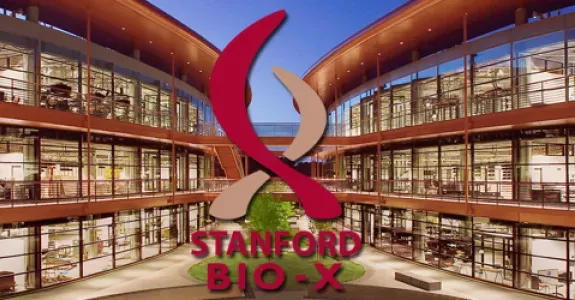
Welcome to the biweekly electronic newsletter from Stanford Bio-X for members of the Bio-X Corporate Forum. Please contact Dr. Hanwei Li, the Bio-X Corporate Forum Liaison if you would like to be added or removed from this distribution list, or if you have any questions about Stanford Bio-X or Stanford University.
Highlights
** On October 9, 2013, Bio-X celebrated the 10th Anniversary of the James H. Clark Center, the hub of Bio-X. Check out CLARK CENTER @ 10X as well as the Bio-X Timeline over the last 15 years!!
** Check out the article by Stanford President John Hennessy in the Nov/Dec 2013 issue of the Stanford Magazine on Bio-X and the Clark Center, "A Cauldron of Innovation".
Seed Grants
**UPDATE: Last week on August 27, 2014, over 300 people attended Bio-X's latest Interdisciplinary Initiatives Seed Grants Program Symposium. There were 8 different oral presentations from faculty members who were awarded Bio-X Seed Grants on the progress that they have made with the funding towards their projects. In addition, Bio-X had its largest poster session ever with 167 posters presented during the reception of the symposium! If you'd like to learn more about any of the projects that were presented during the entire symposium, please contact Dr. Hanwei Li with your questions.
**UPDATE: The awardees of the 7th round of the Bio-X IIP Seed Grants will be announced soon after review of the 141 Letters of Intent has been completed. Stay tuned for the announcement!
 SEED GRANTS FOR SUCCESS - Stanford Bio-X Interdisciplinary Initiatives Program (IIP)
SEED GRANTS FOR SUCCESS - Stanford Bio-X Interdisciplinary Initiatives Program (IIP)
The Bio-X Interdisciplinary Initiatives Program represents a key Stanford Initiative to address challenges in human health. The IIP awards approximately $3 million every other year in the form of two-year grants averaging about $150,000 each. From its inception in 2000 through the fifth round in 2010, the program has provided critical early-stage funding to 114 different interdisciplinary projects, involving collaborations from over 300 faculty members, and creating over 450 teams from five different Stanford schools. From just the first 5 rounds, the IIP awards have resulted in a 10-fold-plus return on investment, as well as hundreds of publications, dozens of patents filed, and most importantly, the acceleration of scientific discovery and innovation.
In 2012, Stanford Bio-X selected 23 new seed grant projects as the winners of the 6th round. Please go here to view the list of awardees, along with the titles of their projects and the abstracts of the research. Competition was intense as the awardees were chosen from 118 Letters of Intent (LOIs). Selection criteria included innovation, high-reward, and interdisciplinary collaboration. (To view the 114 other IIP projects that have been funded from the first 5 rounds, please click here.) In addition, SANOFI has also funded 4 new Bio-X IIP Seed Grant projects from round 6!
We are cultivating and are highly successful in building meaningful collaborations with numerous corporate colleagues. New collaborations through our seed grant projects are highly encouraged. To learn about how to get involved, please contact Dr. Hanwei Li or Dr. Heideh Fattaey.
Fellowships
**UPDATE: Bio-X has recently announced its 19 new fellows for the 10th year of the Bio-X Fellowships!!
Every year, graduate students and postdoctoral scholars of Bio-X affiliated faculty are highly encouraged to apply for the Bio-X Fellowships, which are awarded to research projects that are interdisciplinary and utilize the technologies of different fields to solve different biological questions. Students are encouraged to work collaboratively with professors of different departments, thus creating cross-disciplinary relationships among the different Stanford schools. Our fellows have conducted exciting research, resulting in publications in high-impact journals and have been offered excellent positions in industry and academia.
To date, with the 19 new awardees, Stanford Bio-X has a total of 173 Fellows.
You can view the numerous Fellowship projects that have been awarded over the years as well as oral presentations from previous symposiums here.
**UPDATE: The 9th annual Bio-X USRP was completed last week. The program ended with poster presentations from the 65 participating undergraduates on their summer's research, and this took place during last week's Bio-X IIP Seed Grant Symposium.
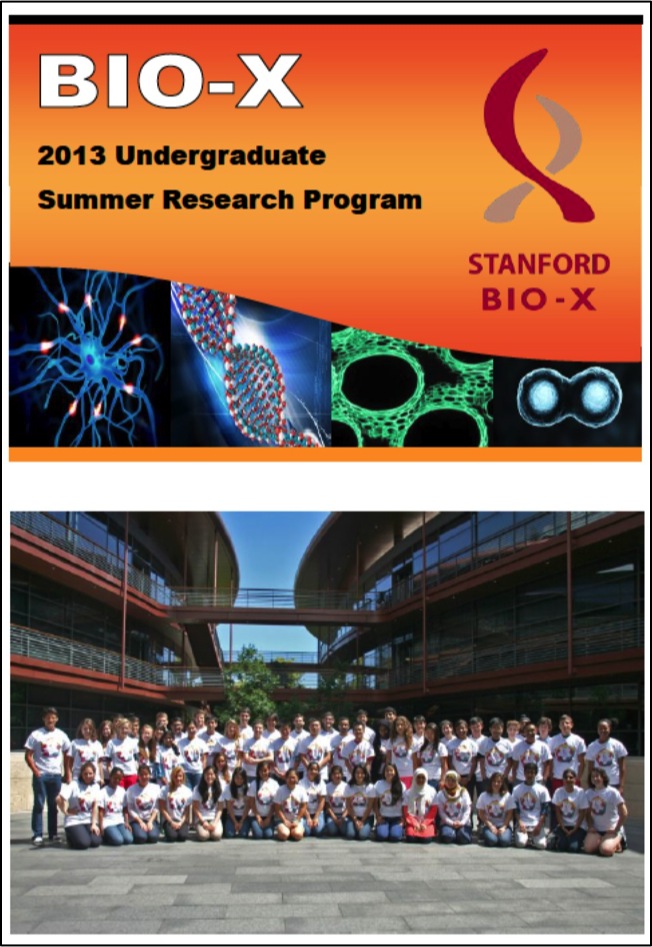 BIO-X UNDERGRADUATE SUMMER RESEARCH PROGRAM
BIO-X UNDERGRADUATE SUMMER RESEARCH PROGRAM
The Bio-X Undergraduate Summer Research Program supports undergraduate research training through an award designed to support interdisciplinary undergraduate summer research projects. The program is an invaluable opportunity for students to conduct hands-on research, learn how to carry out experiments in the laboratory, and develop the skills to read and analyze scientific literature. This program is eligible to Stanford students who want to work in the labs of Bio-X affiliated faculty.
To date, with 65 new awardees from 154 applications this year, 306 students have been awarded the opportunity to participate in the Bio-X Undergraduate Summer Research Program.
Participating undergraduates are also required to present poster presentations on the research that they've conducted during the program. Please click here for title lists of past posters that our undergraduates have presented.
Many fruitful collaborations and relationships have been established with industry through fellowships. Please contact Dr. Hanwei Li or Dr. Heideh Fattaey if you'd like to learn more about how to get involved with these fellowship programs.
News
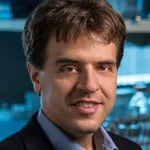
Stanford scientists reveal complexity in the brain’s wiring diagram
Bio-X Affiliated Faculty Karl Deisseroth and John Huguenard
Bio-X Fellow Joanna Mattis and Postdoc Scholar Julia Brill
When Joanna Mattis started her doctoral project she expected to map how two regions of the brain connect. Instead, she got a surprise. It turns out the wiring diagram shifts depending on how you flip the switch. "There's a lot of excitement about being able to make a map of the brain with the idea that if we could figure out how it is all connected we could understand how it works," Mattis said. "It turns out it's so much more dynamic than that." Mattis is a co-first author on a paper describing the work published August 27 in the Journal of Neuroscience. Julia Brill, then a postdoctoral scholar, was the other co-first author. Mattis had been a graduate student in the lab of Karl Deisseroth, professor of bioengineering and of psychiatry and behavioral sciences, where she helped work on a new technique called optogenetics. That technique allows neuroscientists to selectively turn parts of the brain on and off to see what happens. She wanted to use optogenetics to understand the wiring of a part of the brain involved in spatial memory – it's what makes a mental map of your surroundings as you explore a new city, for example.
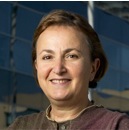 New drug promises relief for inflammatory pain, scientists say
New drug promises relief for inflammatory pain, scientists say
Bio-X Affiliated Faculty Daria Mochly-Rosen
Pain from inflammation sidelines thousands of Americans each year. Many face a tough choice: deal with the pain, take a potentially addictive opioid or use a nonsteroidal anti-inflammatory drug that may increase risk for cardiovascular disease or gastrointestinal bleeding. Now, researchers at the Stanford University School of Medicine have discovered a compound thought to be nonaddictive and safe for the heart and gastrointestinal system that reduces inflammatory pain in mice and rats. They call the compound Alda-1. “Finding a new pain medication is important because we need a safer drug; there are 17,000 deaths from prescription opiate overdoses a year alone,” said Daria Mochly-Rosen, professor of chemical and systems biology. A paper describing the researchers’ findings published Aug. 27 in Science Translational Medicine. Mochly-Rosen is senior author of the paper, and former Stanford postdoctoral scholars Vanessa Zambelli, PhD, and Eric Gross, MD, PhD, are the lead authors.
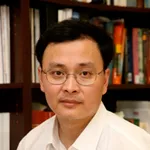 Stanford scientists develop water splitter that runs on ordinary AAA battery
Stanford scientists develop water splitter that runs on ordinary AAA battery
Bio-X Affiliated Faculty Hongjie Dai
In 2015, American consumers will finally be able to purchase fuel cell cars from Toyota and other manufacturers. Although touted as zero-emissions vehicles, most of the cars will run on hydrogen made from natural gas, a fossil fuel that contributes to global warming. Now scientists at Stanford University have developed a low-cost, emissions-free device that uses an ordinary AAA battery to produce hydrogen by water electrolysis. The battery sends an electric current through two electrodes that split liquid water into hydrogen and oxygen gas. Unlike other water splitters that use precious-metal catalysts, the electrodes in the Stanford device are made of inexpensive and abundant nickel and iron. "Using nickel and iron, which are cheap materials, we were able to make the electrocatalysts active enough to split water at room temperature with a single 1.5-volt battery," said Hongjie Dai, a professor of chemistry at Stanford. "This is the first time anyone has used non-precious metal catalysts to split water at a voltage that low. It's quite remarkable, because normally you need expensive metals, like platinum or iridium, to achieve that voltage." In addition to producing hydrogen, the novel water splitter could be used to make chlorine gas and sodium hydroxide, an important industrial chemical, according to Dai. He and his colleagues describe the new device in a study published in the Aug. 22 issue of the journal Nature Communications.
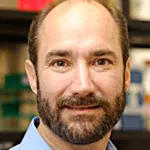 Humans, flies, worms: Researchers work to understand gene expression across organisms
Humans, flies, worms: Researchers work to understand gene expression across organisms
Bio-X Affiliated Faculty Michael Snyder
Fruit flies and roundworms have long been used as model organisms to learn more about human biology and disease. Now, researchers at the Stanford University School of Medicine have found that although many aspects of regulatory networks are conserved among the three distantly related organisms, other differences have emerged over evolutionary time. These differences may explain why, for example, worms slither, flies fly and humans walk on two legs, even though they all use the same basic genetic building blocks. “We’re trying to understand the basic principles that govern how genes are turned on and off,” said Michael Snyder, PhD, professor and chair of genetics at Stanford. “The worm and the fly have been the premier model organisms in biology for decades, and have provided the foundation for much of what we’ve learned about human biology. If we can learn how the rules of gene expression evolved over time, we can apply that knowledge to better understand human biology and disease.” The research was conducted as part of a multi-institutional collaborative effort to understand more about how organisms control the expression of their genes to generate neurons, muscles, skin, blood and all of the other types of cells and tissues necessary for complex life — all at the exactly right time and place in the body.
Events
| Neurology and Neurosciences September 8, 2014, 4 pm - 5 pm Munzer Auditorium, Stanford, CA Frontiers in Aging Seminar Series: "Neural control of aging in Drosophila" Speaker: Scott Pletcher, PhD, Associate Professor, University of Michigan |
Cardiovascular Institute Sept 9, 2014, 12 pm - 1 pm Li Ka Shing Center, LKSC 120, Stanford, CA Frontiers in Cardiovascular Science: "Guidelines, Cardiovascular Health, and the Public" Speaker: Howard Bachner, MD, Editor-in-chief, JAMA |
| Molecular Imaging Program at Stanford (MIPS) Sept 11, 2014, 5:30 pm - 6:30 pm Munzer Auditorium, Stanford, CA CCNE Nano-Bio Seminar Series: "Integration of Paper Microfluidic Methods for Detection of Infectious Diseases for Low Resource Settings" Speaker: Paul Yager, PhD, Professor, Dept. of Bioengineering, Univ. of Washington |
Radiology September 18, 2014, 5:30 pm - 6:30 pm Li Ka Shing Center, LKSC 130, Stanford, CA CME Radiology Grand Rounds: "The Physis and Metaphysis: Where Everything Happens in a Child's Bone" Speaker: Diego Jaramillo, MD, MPH, Professor of Radiology, Perelman SOM at the Univ. of Penn. |
Resources
| Stanford University |
| Stanford Bio-X |
| Bio-X Seed Grants The Stanford Bio-X Interdisciplinary Initiatives Program (IIP) provides seed funding for high-risk, high-reward, collaborative projects across the university, and have been highly successful in fostering transformative research. |
| Office of Technology and Licensing "Techfinder" Search the OTL Technology Portal to find technologies available for licensing from Stanford. |
| Stanford Center for Professional Development - Take advantage of your FREE membership! - Take online graduate courses in engineering, leadership and management, bioscience, and more. - Register for free webinars and seminars, and gets discounts on courses. |
| Stanford Biodesign Video Tutorials on how FDA approves medical devices A series of video briefs recently produced by the Stanford Biodesign Program teaches innovators how to get a medical device approved for use in the United States. This free, online library of 60 videos provides detailed information on the Food and Drug Administration regulatory process, short case studies and advice on interacting with the FDA. |
To learn more about Stanford Bio-X or Stanford University, please contact Dr. Hanwei Li, the Bio-X Corporate Forum Liaison, at 650-725-1523 or lhanwei1@stanford.edu, or Dr. Heideh Fattaey, the Executive Director of Bio-X Operations and Programs, at 650-799-1608 or hfattaey@stanford.edu.
